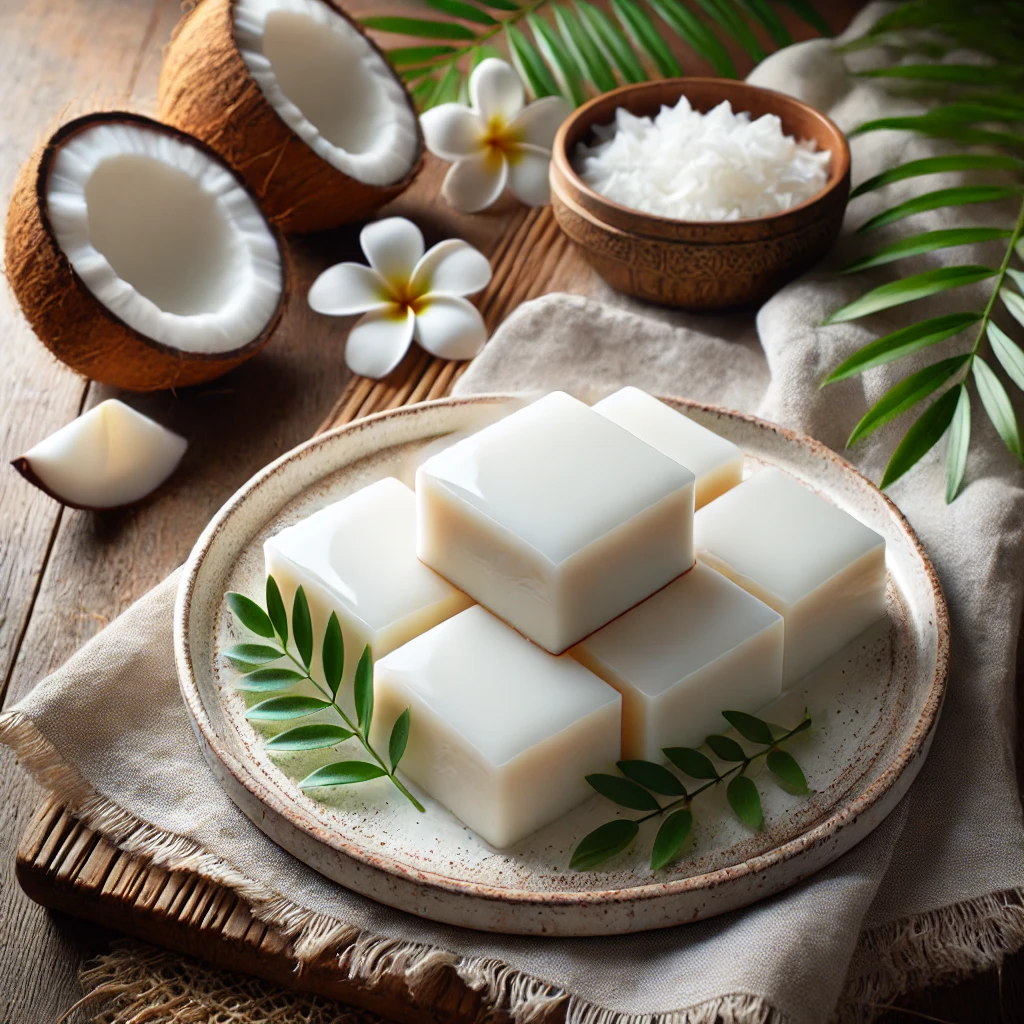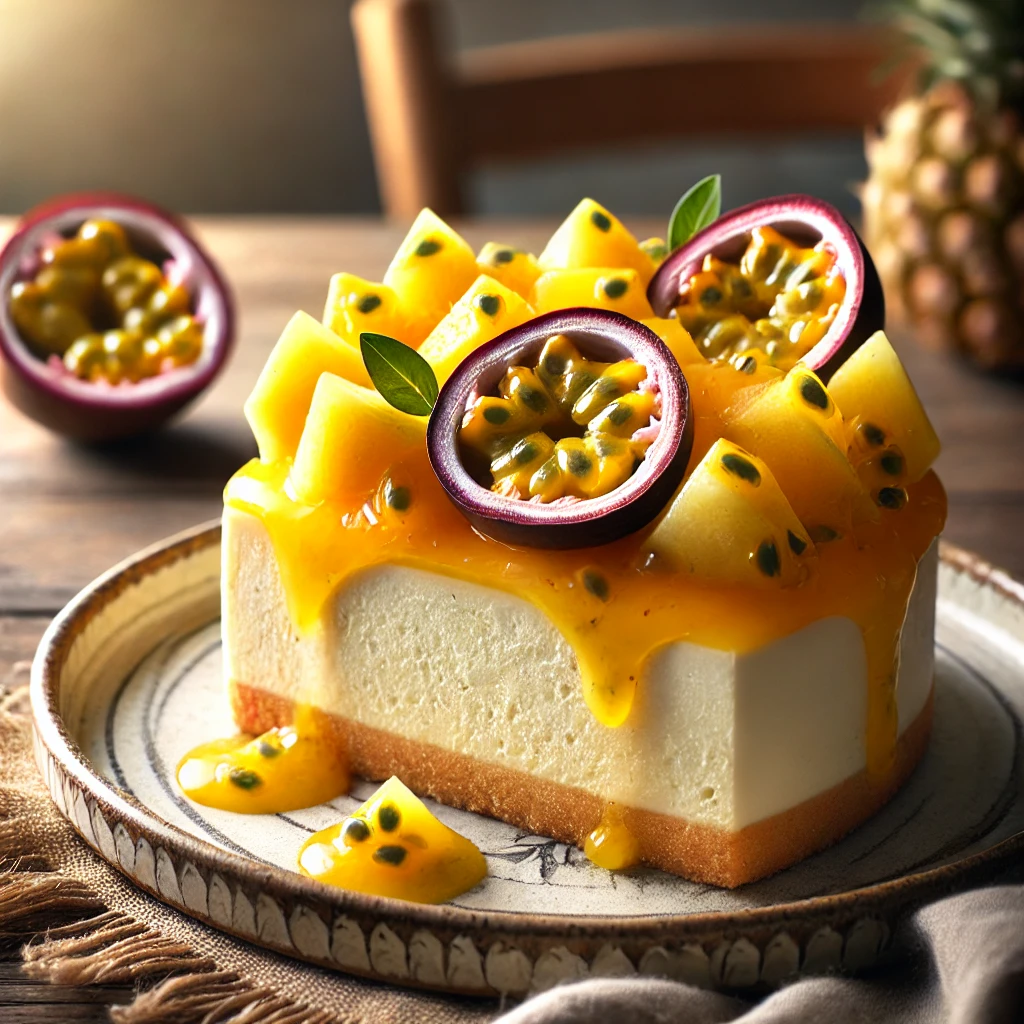Table of contents
Introduction
Hawaiian desserts are a delightful blend of tropical flavors and cultural influences. These sweets capture the essence of Hawaii, with their fresh ingredients and vibrant tastes. Whether you’re indulging in a classic treat or exploring modern twists, Hawaiian desserts offer a unique and satisfying experience.
Exploring Popular Hawaiian Desserts
The Influence of Culture and Ingredients
Hawaiian desserts are a beautiful fusion of various cultural influences, predominantly Polynesian, Japanese, and Portuguese. Each of these cultures has brought unique elements to Hawaiian cuisine, blending to create desserts that are rich in flavor and history.
Polynesian Influence:
The Polynesians, who were among the earliest settlers of Hawaii, introduced staple ingredients like coconut and taro. These ingredients are still prominently featured in many traditional Hawaiian desserts. Coconut, for instance, is used to make Haupia, a beloved coconut pudding.
Japanese Influence:
Japanese immigrants brought with them their culinary traditions, including the use of ingredients like mochi (sweet rice flour). This has led to the creation of unique desserts like mochi ice cream, where traditional Japanese mochi is filled with local Hawaiian flavors.
Portuguese Influence:
The Portuguese influence is most notable in the popular dessert, Malasadas. These sugar-dusted doughnuts have become a staple treat in Hawaii, especially during celebrations. The Portuguese also introduced sweet breads, which have been adapted into local variations.
Local ingredients like coconut, pineapple, and mango add a tropical touch to these desserts. The abundant supply of these fruits in Hawaii makes them a natural choice, contributing to the fresh and vibrant flavors that characterize Hawaiian sweets.
The Charm of Tropical Flavors
The charm of Hawaiian desserts lies in their use of tropical flavors. Fruits such as pineapple, mango, and passion fruit (known locally as lilikoi) provide a refreshing and exotic taste. These fruits are not just ingredients but are integral to the identity of Hawaiian desserts.
Pineapple:
Often called the “king of fruits” in Hawaii, pineapple is a key ingredient in many desserts. Pineapple Upside-Down Cake, for example, showcases the fruit’s sweet and tangy flavor, combined with a caramelized topping that delights the palate.
Mango:
Mangoes add a juicy sweetness to desserts like mango bread and mango pudding. The fruit’s vibrant color and flavor make it a favorite in both traditional and modern Hawaiian sweets.
Passion Fruit (Lilikoi):
Passion fruit is used to add a tart and aromatic element to desserts. Lilikoi cheesecake is a popular dessert that combines the richness of cheesecake with the zesty flavor of passion fruit, creating a unique and memorable treat.
When combined with traditional preparation methods, these tropical flavors create desserts that are both exotic and comforting. The use of fresh, local ingredients ensures that Hawaiian desserts are not only delicious but also a true reflection of the islands’ natural bounty.
Top Hawaiian Desserts
Haupia (Coconut Pudding)

History and Origin
Haupia is a traditional Hawaiian dessert enjoyed for generations. Made from coconut milk, sugar, and a thickening agent like cornstarch, this creamy, gelatin-like pudding is often served at luaus and other celebrations. Its deep roots in Hawaiian culture make it a beloved treat.
Ingredients and Preparation
To make Haupia, you need coconut milk, sugar, and cornstarch. Combine the ingredients and heat them until thickened, stirring constantly to avoid lumps. Pour the mixture into a dish and let it cool until it sets. Cut into squares or scoop into bowls. This dessert’s creamy texture and rich coconut flavor make it a favorite at both casual and festive occasions.
Malasadas (Portuguese Doughnuts)
Introduction to Malasadas

Malasadas are deep-fried doughnuts with Portuguese origins that have become a beloved part of Hawaiian cuisine. These sugary treats are enjoyed fresh and are especially popular during Malasada Day, also known as Fat Tuesday, which precedes Lent.
Ingredients and Preparation
The dough for Malasadas includes flour, sugar, eggs, butter, and yeast. After allowing the dough to rise, it is shaped into balls and fried until golden brown. Once fried, the hot Malasadas are rolled in sugar and enjoyed fresh, offering a crispy outside and a soft, fluffy inside.
Lilikoi (Passion Fruit) Cheesecake
Unique Features

Lilikoi cheesecake is a delightful twist on the classic cheesecake, infused with the tangy and sweet flavor of passion fruit. This dessert is a favorite among both locals and visitors, offering a creamy texture combined with a burst of fruity zest.
Ingredients and Preparation
The crust for Lilikoi cheesecake is usually made from graham crackers or macadamia nuts. The filling includes cream cheese, sugar, eggs, and lilikoi juice or puree. The cheesecake is baked and then chilled, often topped with a layer of lilikoi glaze to enhance its flavor.
Pineapple Upside-Down Cake
Evolution of the Recipe
Pineapple Upside-Down Cake is a classic dessert that has been warmly embraced by Hawaiian cuisine. The cake is topped with caramelized pineapple slices and cherries, creating a beautiful and delicious presentation. This dessert is often enjoyed at gatherings and special occasions.
Ingredients and Preparation
The topping for Pineapple Upside-Down Cake includes pineapple slices, maraschino cherries, brown sugar, and butter. The cake batter is made with flour, sugar, eggs, and pineapple juice. Once assembled, the cake is baked until golden and then inverted to reveal the caramelized topping.
Cultural Significance
Traditional Hawaiian Celebrations
Desserts at Hawaiian Luaus
Luaus are traditional Hawaiian gatherings that celebrate the spirit of Aloha with food, music, and dance. These festive events are held to mark special occasions, such as weddings, birthdays, or cultural festivals. Desserts play a significant role in luaus, adding a sweet finale to the feast. Traditional favorites like Haupia, a creamy coconut pudding, and Lilikoi cheesecake, a tangy passion fruit-infused treat, are often served. These desserts not only satisfy sweet cravings but also honor Hawaiian traditions and hospitality. They are a reflection of the islands’ bounty and the cultural melting pot that defines Hawaiian cuisine.
The Significance of Luaus
Luaus are not just about the food; they are an experience that showcases Hawaiian culture and community. The preparation and serving of desserts at these gatherings are often a communal effort, involving families and friends. This collective participation highlights the importance of unity and sharing in Hawaiian culture. Desserts like Haupia are made using age-old recipes passed down through generations, preserving the cultural heritage and culinary traditions of Hawaii.
Festivals and Events
Showcasing Hawaiian Desserts
Hawaiian desserts are prominently featured at various festivals and events across the islands. The Annual Maui Fair, for instance, is a celebration of local culture, agriculture, and culinary arts, where a wide array of desserts, from traditional to modern, are showcased. Visitors can sample everything from classic Haupia to innovative fusion desserts that blend Hawaiian ingredients with global flavors. These events provide a platform for local chefs and home bakers to display their creativity and expertise, contributing to the rich tapestry of Hawaiian cuisine.
The Kona Coffee Cultural Festival
Another significant event is the Kona Coffee Cultural Festival, which celebrates the rich history and heritage of coffee farming in Hawaii. Desserts featuring Kona coffee, such as coffee-flavored Malasadas and espresso-infused Haupia, are highlighted at this festival. These coffee-inspired desserts not only delight the taste buds but also pay homage to the island’s coffee-growing legacy. The festival attracts both locals and tourists, offering a unique opportunity to indulge in the diverse and delicious world of Hawaiian desserts.
Culinary Competitions and Exhibitions
Culinary competitions and exhibitions are also a key part of Hawaiian festivals. These events challenge chefs to create innovative desserts using traditional ingredients, resulting in exciting new takes on classic recipes. The competitions often focus on presentation and taste, pushing the boundaries of what Hawaiian desserts can be. These exhibitions serve as a testament to the evolving nature of Hawaiian cuisine, blending tradition with modernity.
Modern Influence and Adaptations
Fusion Desserts
Hawaiian desserts continue to evolve, incorporating influences from around the world. Fusion desserts blend traditional Hawaiian ingredients with international flavors, resulting in innovative and exciting new creations. This trend reflects Hawaii’s diverse cultural landscape and culinary openness.
Hawaiian Desserts in Popular Culture
Hawaiian desserts have gained popularity beyond the islands, appearing in cookbooks, food blogs, and television shows. Their unique flavors and cultural significance have captured the imagination of food enthusiasts worldwide, making Hawaiian desserts a beloved part of global cuisine.
Making Hawaiian Desserts at Home
Accessibility of Ingredients
Where to Find Tropical Ingredients
Many of the ingredients used in Hawaiian desserts can be found in local grocery stores or specialty markets. Tropical fruits, coconut milk, and other essentials are widely available, making it easy to recreate these delicious treats at home.
Substitutes for Local Ingredients
If certain tropical ingredients are hard to find, there are substitutes that can be used without compromising flavor. For example, canned pineapple can replace fresh pineapple, and other fruit juices can be used in place of lilikoi juice. These substitutions ensure that you can enjoy Hawaiian desserts no matter where you live.
Tips for Perfecting Hawaiian Desserts
Techniques and Tricks
Perfecting Hawaiian desserts requires attention to detail and a few key techniques. For example, ensuring the right consistency for Haupia involves careful heating and stirring, while getting the perfect texture for Malasadas requires proper dough handling and frying. Following these tips will help you achieve the best results.
Common Mistakes to Avoid
Avoiding common mistakes is essential for making successful Hawaiian desserts. Overmixing the batter for cakes, using the wrong type of sugar, or not allowing desserts to set properly are pitfalls to watch out for. Awareness of these issues will help you create desserts that are both delicious and visually appealing.
Conclusion
Why Hawaiian Desserts Are Beloved
Flavor Profiles
Hawaiian desserts are beloved for their unique flavor profiles that blend sweetness, tartness, and creaminess. The use of fresh, tropical ingredients adds a refreshing and exotic twist that sets these desserts apart from others.
Cultural Connections
The cultural connections embedded in Hawaiian desserts add to their charm. Each dessert tells a story of the islands’ history, traditions, and diverse influences. Enjoying these treats is not just about satisfying a sweet tooth but also about experiencing a piece of Hawaiian heritage.


1 thought on “What dessert is popular in Hawaii?”